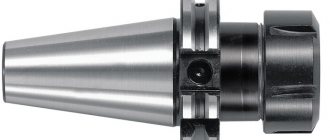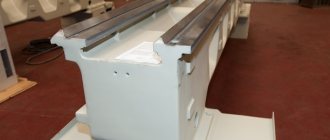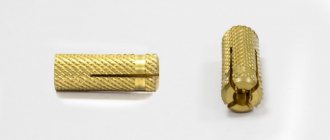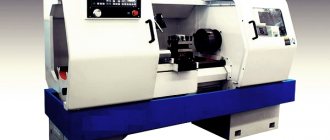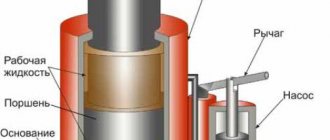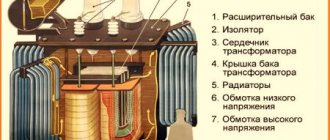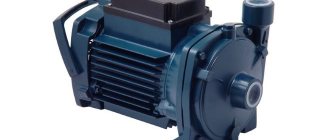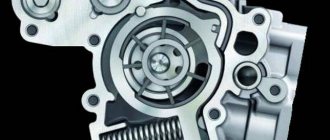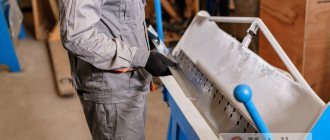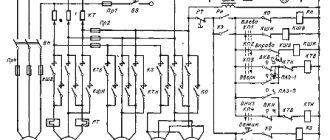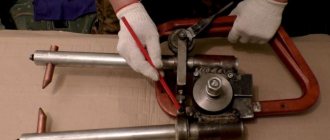Scope of application of collet chucks and main advantages
Fixing equipment with replaceable collets is widely used for installing cutters and axial workpieces on various types of metal-cutting machines. It is also used on CNC machines due to its high clamping reliability and quick tool changes. The collet fastening is optimal for fixing rods and other cylindrical parts. Its use is also convenient for re-fastening a machined part.
The main advantages of the collet fixation method:
- Minimum radial runout of the workpiece.
- High-precision centering of the part.
- Easy installation without keys.
The main disadvantage of collet chucks is the limited diameter of the shanks of the installed tools and workpieces. To expand the standard sizes of the tool, it is possible to use adapter bushings.
Purpose of collet chucks
Collet clamps can hold not only a cutter, but also a cylindrical workpiece.
According to their purpose, cartridges are divided into:
- The servers. They are made in the form of a bushing made of durable hardened alloy. Three or four longitudinal through cuts were made on its surface. They form elastic petals that clamp the shank. With the help of such equipment, a tool or workpiece is supplied.
- Clamping chucks. Fixed with great precision. Axial movement is not available.
Clamping chucks are designed for use in automatic slitting grinders. The collet can be used to quickly secure the workpiece and release it after milling is completed. Such machines are often equipped with two collets of different designs. The part is clamped into one, the other is used for the working tool. The workpiece fastening is equipped with a mechanical drive; it quickly screws and loosens the nut. Installation and removal time is minimized, ensuring high productivity and milling accuracy.
Working principle of the collet chuck
Collet systems are used for fastening cutters and axisymmetric workpieces on various machines, primarily milling and machining centers. They are also used where fixation with high precision and minimal axial runout is required.
There are many different sizes and types of collets in use, all of which operate on a similar principle. The clamping element - the nut - when screwed, presses on the end part of the collet, which is retracted into the opening of the cone, its internal diameter decreases, simultaneously centering and clamping the shank. When it is necessary to remove the cutter, the nut is unscrewed, the pressure of the blades on the tool is reduced and it can be removed from the mount.
An important advantage of collet clamps over cam clamps is high fastening accuracy and the absence of axial runout. A special wrench is not required, since the nut is tightened and loosened with a regular union wrench.
The disadvantage is the need to have a separate collet for each diameter.
Collet clamping elements are especially convenient for fastening conical shanks - metric and Morse.
Collet chuck design
The design of the collet clamp is simple, but all its parts require high precision manufacturing. The equipment consists of a nut and a set of collets. The feed collet bushing is made of tool steel and must be hardened. It has longitudinal cuts in such a way that three or four elastic petals are obtained. The fastener is screwed onto the rod, which feeds it using a hydraulic or cam system.
Design Features
Collet chucks vary in type and size, but they all work on the same principle. The equipment consists of a set of collets and a self-clamping nut, which creates pressure on the end of the collet. Due to the pressure force, the collet moves into the tapered opening, simultaneously decreasing in diameter and providing a compression force on the part or tool shank. To remove the part, the nut is screwed together, increasing the diameter of the collet.
There are chucks with retractable, fixed and retractable collets. According to its purpose, this element can be a feeder or a clamping element. The feeder is a sleeve with three springy petals and ends directed towards the center. The collet is screwed onto a rotating rod, which feeds the workpiece through a cam mechanism or hydraulic drive. The elasticity of the petals ensures tight compression of the tool or part.
The design of the one-piece collet is a spring bushing with petals. The number of petals depends on the diameter of the part being fixed:
- three-lobed – parts or tools with a diameter of up to 3 mm;
- 4-petal – from 3 to 80 mm;
- 6-petal – parts with a diameter of more than 80 mm.
To fasten parts and tools of the smallest diameter, chucks with detachable clamping collets are used. The movement and fixation of the cams in this design is provided by special springs.
Types and principles of operation of chucks
Collet chucks are used mainly when processing cold-rolled rods or other metal products that have an already machined surface.
Structurally, cartridges can be classified according to functionality:
- with a fixed mechanism;
- with retractable mechanism;
- with retractable mechanism.
Each design has its own characteristics. The feeding type is made in the form of a steel sleeve with 3 cuts forming petals that have a springing effect.
Drawing No. 1 of the main spindle collet
Type F
Collets type F - clamping the main spindle are used to secure the workpiece.
Drawing No. 2 of the counter-spindle collet
Type LN
Collets type LN - counter spindle are produced elongated, size E depends on the standard size.
Drawing No. 3 collet type R
Type R
Type R – are pull-type collets.
Drawing No. 4 collet type T
Type T
Type T - clamping.
Drawing No. 5 collet BF
Type BF
BF type feed collet - designed for bar feeding.
When installed on the machine, the feed collet is threaded onto the pipe with the help of which it is fed into the working area. It is necessary to take into account the design feature - the size and shape of the collet, which must necessarily correspond to the profile of the bar being processed.
In preparation for processing, the rod moves through the petals, which, due to their design features, tightly hold the workpiece. During processing, when feeding the workpiece, the adhesion force between the petals and the product increases due to rotation. The principle of operation of the clamping elements is based on strengthening the adhesion of the petals to the workpiece during rotation of the working mechanism. Bushings with 3 petals are used for processing products up to 3 mm, four – up to 80 mm, six – over 80 mm. Typically, collets have an angle at the apex of the cone equal to 30º.
Collets for shaft 2 mm (0.1-3 mm) for micro drill
When processing thin rods, collets equipped with springs are used to increase the clamping force of the jaws. When increasing the diameter of the workpiece being processed, designs are used that are equipped with special inserts selected according to the dimensions of the product. Collet clamps are also used when machining with a drill, cutter or tap. The sleeve is fixed in the chuck with a nut, and the cutting tool is fixed directly in the collet. When fixed with a nut, the internal volume of the hole where the workpiece is installed is reduced, thereby increasing the force holding the rod stationary.
Cartridges of this design also have their drawbacks. First of all, the requirement that the shanks of the tool used must match the characteristics of the collets used. At enterprises, the most widely used collets are the ER type, which constitute the largest number in the total volume of tools used.
When performing complex work on the manufacture of products, various collets are used, indicating all sizes and technology for performing work operations, but often it is necessary to combine equipment or make the necessary collet chuck with the required characteristics with your own hands.
Video review of a lathe collet chuck
Basic rules for choosing a collet chuck
When choosing a chuck to equip a machine, you must be guided by several basic rules:
- Attaching the chuck to the spindle. Decide on the mounting method and the permissible diameter or number of the Morse cone. The collet chuck can be installed on the spindle through a quick-release cone clamp directly or through an adapter sleeve, and also have a threaded fastening.
- Determine the size of the flange for fastening (if there is a belt).
- Select the number of fists depending on the diameter of the part or tool.
How to make your own collet chuck
When making various products with your own hands, situations arise when the available equipment does not allow you to perform the necessary operations. It is required to produce a collet chuck that meets the requirements, with the product being manufactured according to the developed sketch.
All work must begin with the preparation of a sketch with the elaboration of all the necessary details. The sketch of the chuck allows you to take into account all the features when making the necessary equipment and clamping mechanism with your own hands.
When making collets with your own hands, you need to consider several features:
- the internal diameter of the collet is equal to or less than the minimum diameter of the part;
- in a collet, an increase in the internal diameter is possible due to the expansion of the petals;
- to increase the production of adjustable collets after setting and improve the quality characteristics, additional grinding of the conical and guide parts of the collet is necessary;
- It is necessary to take into account that during long-term operation the elasticity of the collet blades is lost, as a result of which breakage may occur.
Legend
In accordance with the current standard, a collet chuck with an outer cone intended for fastening a tool with a cylindrical shank must have the following symbol.
For version 1 (universal machines) with cone number 50, shank diameter (d) 12 mm and length 90 mm: Chuck 1-50-12-90 GOST 26539-85
Jaw chuck for micro drills as an alternative to collet chucks
In order not to think about how to make a collet chuck or clamp with your own hands, you can purchase a jaw chuck to equip your microdrill. This clamp is an analogue of the jaw chucks used to complete conventional electric drills, and works on a similar principle. When the movable holder on the body of such a device rotates, the cams with which it is equipped move and thereby ensure reliable fixation of the tool.
Miniature jaw chuck ensures rigid fixation of working attachments
A wide variety of inexpensive jaw clamps are available today to equip micro drills. The vast majority of their models are fixed on the drive motor shaft using a threaded hole on the side of the mounting part, into which a screw is screwed. Rotation of the cam clamp cage, depending on the specific model, can be done either manually or using a special key, which is necessarily present in the factory kit of this device.
Purchasing a jaw chuck is a good opportunity for little money to equip your power tool with a universal clamping device that is easy to use and provides reliable fixation of working attachments
The main thing you should pay attention to when choosing is the material from which the main working elements of the clamp are made. If you choose a chuck whose jaws are made of durable high-carbon steel, it will last much longer and will provide precise fixation of the tool being used.
To carry out drilling work on miniature workpieces, engraving machines, the so-called “dremels,” are usually used. The name comes from the name of the most popular manufacturer. This is a convenient hand tool, but its cost is usually high (especially for high-quality branded products).
The most common area of application is amateur modeling and production of printed circuit boards. As a rule, an industrial design is redundant for such work: some of its capabilities are not in demand. Therefore, home craftsmen often create instruments with their own hands.
Collet sets
Chucks with a set of replaceable collets are intended for clamping axial workpieces and cutters on milling, turning, drilling equipment and CNC machines. All collets work on the same principle; the only difference is in the sizes and types of collets.
The market offers a variety of sets of collets from domestic and foreign manufacturers, but all of them are manufactured in accordance with GOST or DIN. Particularly popular are collet sets marked ER, OZ and ER - they can be used for conventional machines and CNC equipment.
In terms of functionality, sets of collet chucks are no different, but the contents may be different. For example, one set may include 18 collets, while another set contains 23 devices. Manufacturing enterprises purchase the kits needed for a specific machine; for a private master, a minimum set will be enough.
Types and features
Depending on the area of application and the design features of the mechanism, collet chucks are divided into several types:
- ER collets. With two clamping points and a through hole, the most commonly used type;
- for taps. With a square groove compensating the axis;
- through and blind. The former process parts of unlimited length, the latter are suitable for workpieces of limited size, for example, workpieces in which one end is sealed;
- with one and two clamping sections. The second type, compared to the first, fixes the part more reliably by holding it at two points on the axis.
Collet chuck clamps come in two types:
- clamping The bushing is made in the form of several springy petals corresponding to the size of the fastener. The three-lobe bushing is designed for processing workpieces with a diameter of up to 0.3 cm, four-lobe bushings - from 0.3 to 8 cm, six-lobe bushings - for parts more than 8 cm in diameter;
- servers. The steel collet is equipped with three longitudinal grooves, forming petals with converging ends. The well-springing design feature allows for easy installation and reliable holding of a workpiece of the required diameter in the chuck. During operation, the feed mechanism with the screwed collet begins to move, which contributes to an even closer approach of the petals.
The feeding type of cartridge is more reliable, but requires a special key for fixation. Clamping types are used in cases where frequent replacement of cutters during operation is necessary.
